Agility Dog Training with Peter Lewis

The electricity and excitement of an Agility Dog Competition is infectious.
My first exposure to Peter Lewis and the Agility dog sport was in Europe several years ago. I was in Tourni, Belgium producing a video on a working dog championship (the Mondi Ring Sport). There was a large tent set up next to the stadium for an Agility demonstration that Peter was hosting.
As the first day of the championship progressed it became obvious that more spectators were inside the tent watching Peter and the Agility competitors than were outside watching the championship. The enthusiasm of the spectators over this new dog sport fascinated me.
Peter is from England and is one of the founders of the Agility sport in the UK. He is also the author of a very popular book on the subject.
I met him during a break in the Ring Competition and we got along well. There were not a lot of people in Tourni that spoke English, so he and I ended up having dinner that night with his wife Carol. We talked Agility until 1 AM and agreed to do a training video on the subject some time in the future.
Between my schedule and Peter having a heart attack the next spring, we did not get the tape filmed until I went to England in the fall of 1989. As times have gone by, I've added this video to our streaming site for free of charge. Watch Training Your Agility Dog now. It's an old video but still has some concepts that may still be relevant to Agility today.
What is Agility in dog sports?
For those readers that have no idea what Agility is, the best way to describe it is to compare it with a steeplechase for horses. There are between 10 and 20 jumps (or climbing articles) in a 40 square yard area. In its simplest form, the handler and dog run a prescribed course that has been determined by the judge. The dog goes over each jump or article (i.e., the catwalk or in our case, it's a dogwalk) while the handler runs along telling his dog which jump to take next. Each dog team is timed (most courses are 40 to 50 seconds). The teams receive faults for jumps knocked down or jumps refused and contact points missed.
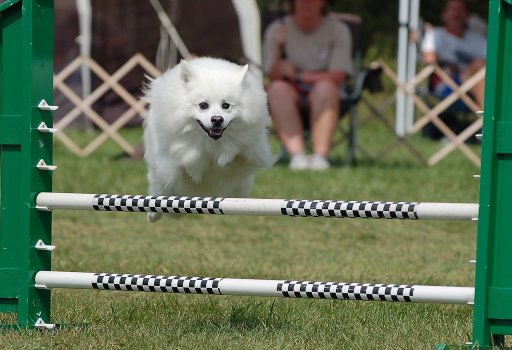
After the Belgium show and then seeing Agility demonstrated at several other European dog shows there is no doubt in my mind that this dog sport is going to become very popular in America. Competitors and dogs love it but most importantly it's a great spectator sport. It's exciting. There are few dog sports where you see the spectators constantly cheering and laughing the way they do at an Agility competition.
I have only seen one Agility trial here in the states, but I was told that it was fairly typical of the level of competition across the country. The British have a lot to offer in the form of training help. This should be expected from the simple fact that they have been at it for over 10 years.
I have noticed that many of the American dogs have problems hitting contact points. The purpose of a contact point is to instill safety into the sport. There are 2 contact points on each end of the climbing objects (the climbing wall, the seesaw, or the dog walk). The contact points are painted a different color than the rest of the article. They are the part of the article right next to the ground. The dogs must touch a contact point as it climbs onto an article and then again as it comes down off the article. Should it climb the wall and then spring off the backside before hitting the contact point it loses points.
Peter has developed an ingenious idea to force a dog to hit contact points. He makes a 30" hoop out of the garden hose and then teaches the dog to go through it as it sits upright on the ground. Once the dog has mastered the hoop - it never goes over a climbing article in training without going through the hoop just before it climbs up an article and another hoop as it climbs down off the article. The only time a dog doesn't see the hoops is in a trial. The dogs learn that they cannot jump off the wall because they must go through the hoop at the bottom. This technique could be applied to Schutzhund or AKC obedience.
The hardest article to train in Agility is the weaving poles. Peter developed a system in 1981 that has proven to be very effective. He divides the poles into odd and even numbers and then connects all the even poles together with wire and does the same with all the odd-numbered poles. These two sets of poles are then separated for beginner dogs. This creates a channel for the dog to move through. As the dog gains confidence, the 2 groups of poles are moved closer together and wires are bent to create a channel that the dog must weave through to get from one end to another. It's a very simple system that lets the dog understand what is expected.
As I watch Americans compete, I realize that they will really benefit from the British in handling skills. You will not win in England unless you can effectively Handle your dog from 4 positions: the left, the right, in front of, and behind your dog. At this point of Agility development in America, most people come from the ranks of competition obedience, and they have a problem thinking of anything other than the left. Once handlers start to learn these new techniques, the old lefties will no longer be competitive. You need only to see Lesley Olden and her dog Meg in my video to convince yourself that what I am saying is correct.
The one thing that I have noticed that is different in America is that there is a larger variety of dogs competing than in England. The British are sweet on Border Collies and a lot of competitors have themselves convinced that you must have a collie to win. I personally don't think this is true. There are 30 breeds of dogs represented in the national finals of the United States Dog Agility championship.




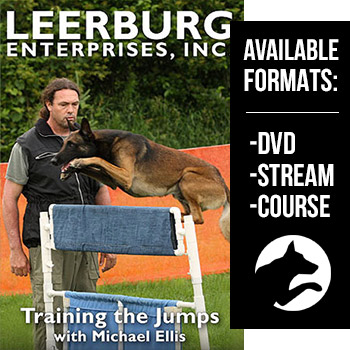
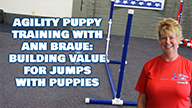
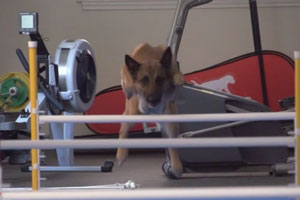

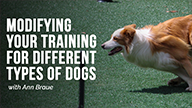
Ask Cindy.